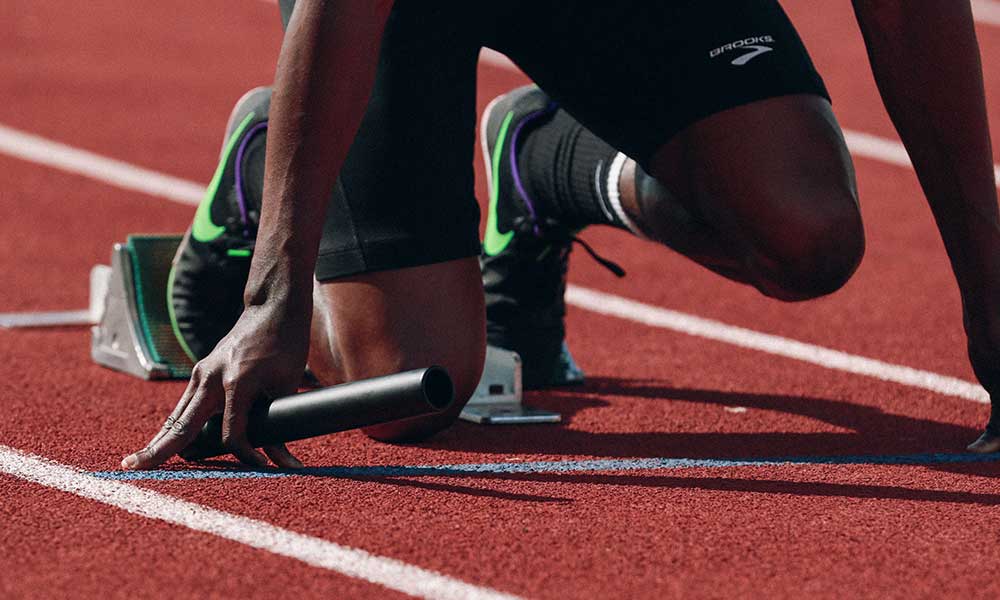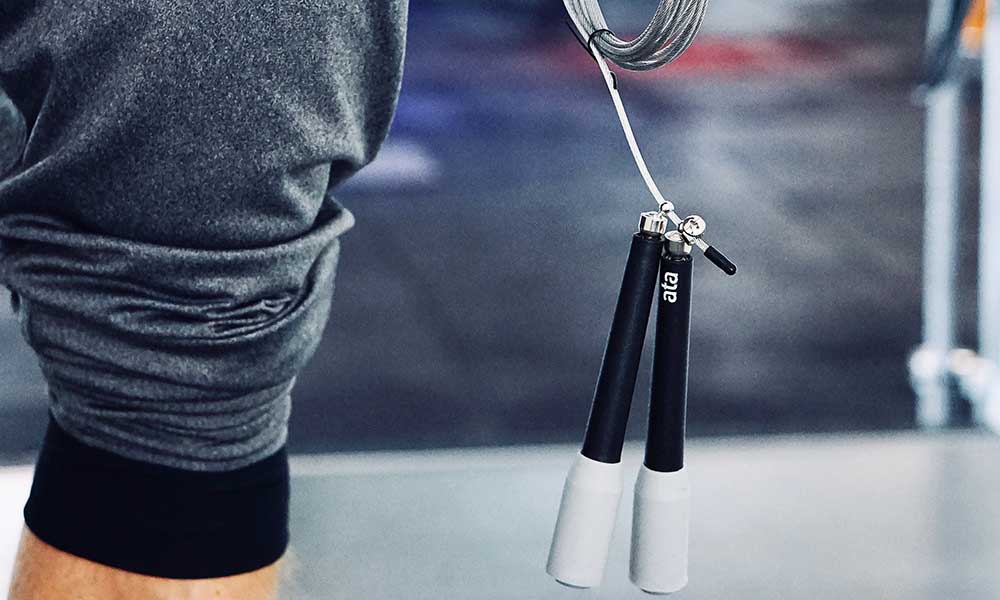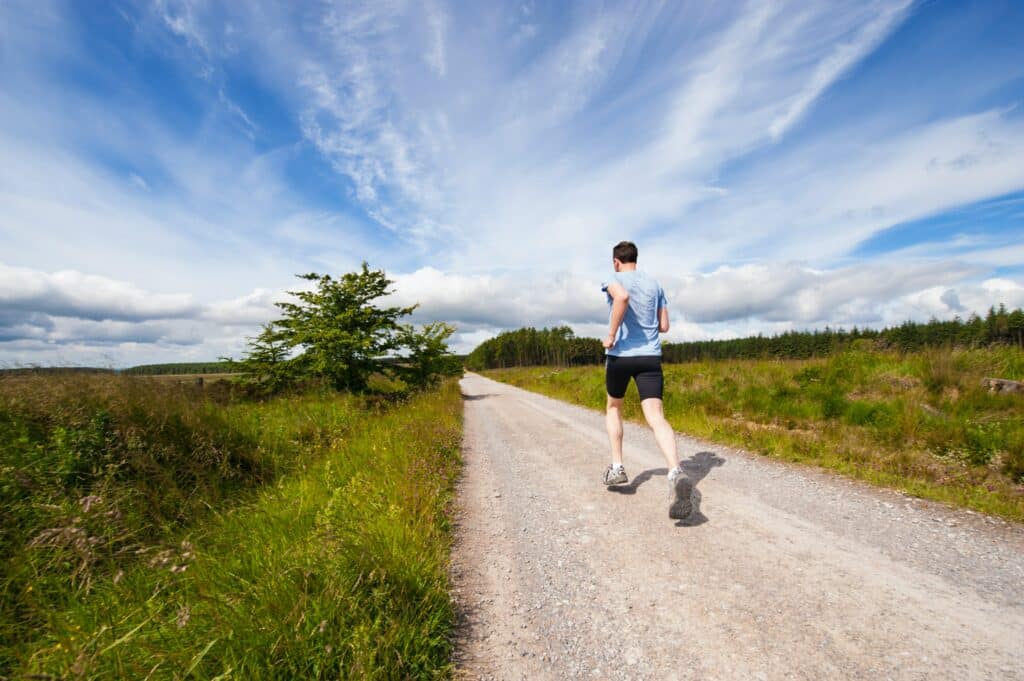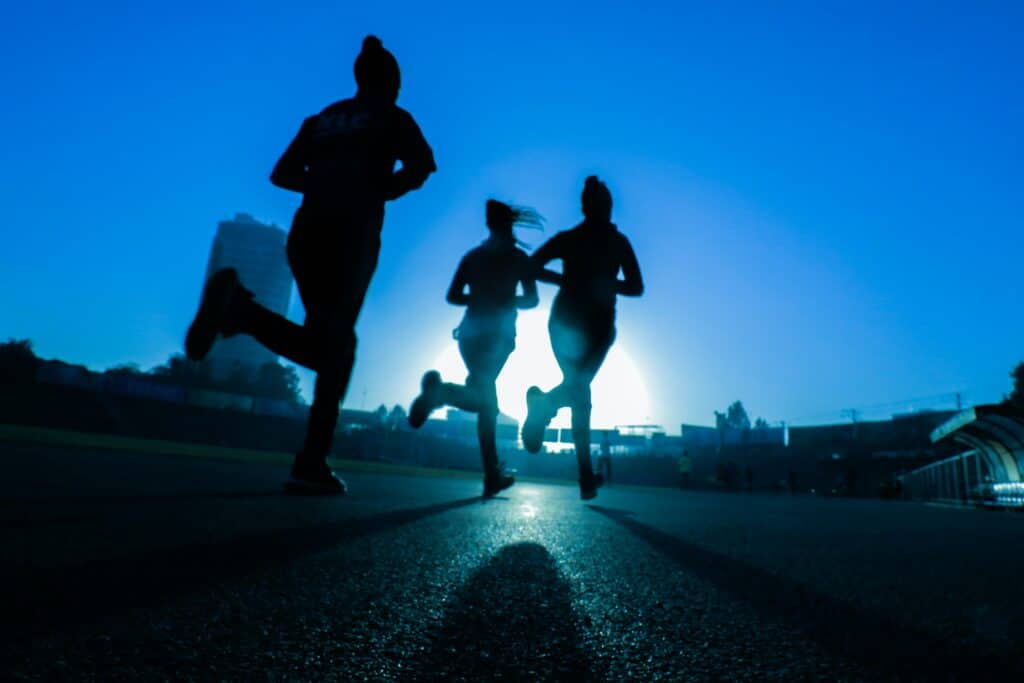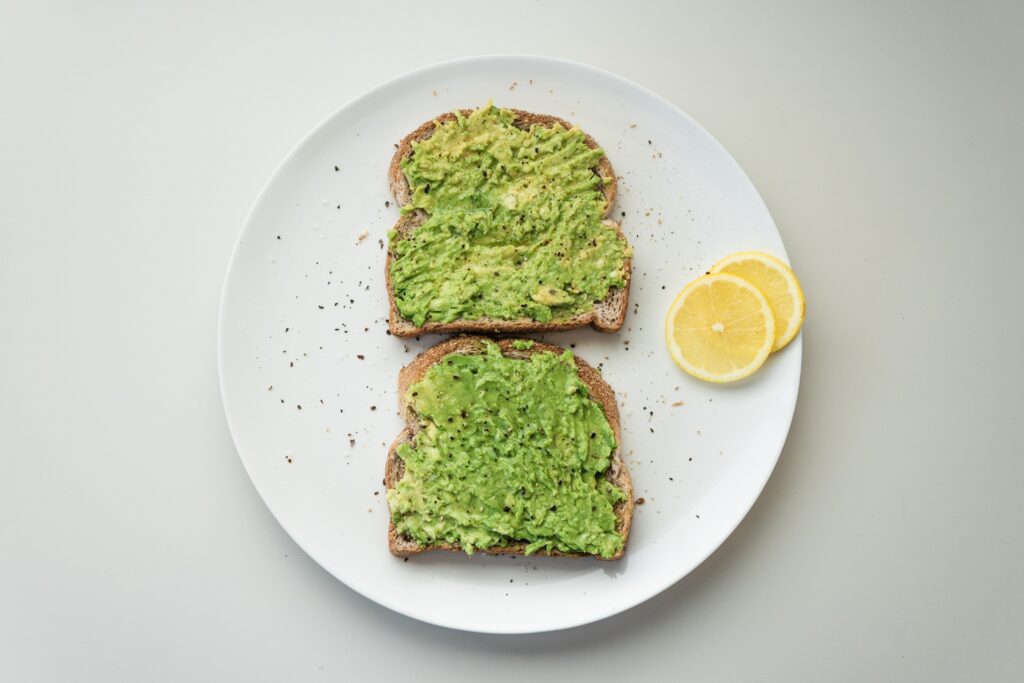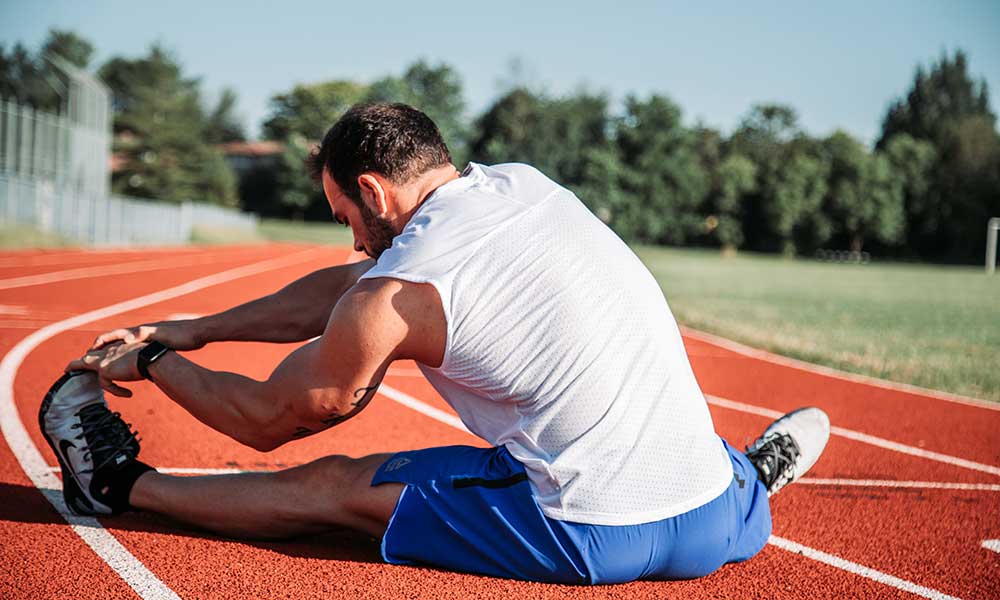Sprinting is a different mechanism than running for distance which will require unique training to improve. This is unique and different from normal endurance running but should also improve your overall physical ability.
You can start to sprint faster by incorporating more stretching into your running workouts as well as concentrating on proper posture, staying on the tops of your toes when running, and shortening your stride.
There are many reasons for wanting to improve your sprinting speed. For professional sprinters or athletes this is fairly clear as it will help to win races or perform at a higher level at their sport. Sprinting speed gives them an edge to cross the finish line faster, get to the ball faster or improve positioning.
But what about for amateur runners and athletes? Many of us are involved in amateur sport leagues where sprinting is part of the game. Thus, increasing your maximum speed helps you to perform better and hopefully enjoy your sport more. Or it can help you as you are trying to reach a personal best a your next marathon or half marathon race.
For endurance runners, sprinting faster can actually increase your average pace as this requires your muscles to grow stronger and more resilient. It will also challenge your breathing and increase your lung capacity, cardiovascular strength, and your recovery.
To help you sprint faster we will be talking about learning how to stretch and warm up properly to avoid injuries, improving or correcting your form, and growing your leg muscles to push you faster.
Stretching and warming up
You’ll want to stretch all of your muscles before your sprint training. Sprinting is an intense activity that should be done when your muscles are warmed up at least 10-15 minutes prior to beginning your sprinting.
There are two types of stretching, Static and Dynamic. Static stretching involves stretches that require little or no movement aside from what it took to get into the stretch in the first place. Historically, static stretching was taught in schools as the way to ‘limber up’ before sports or P.E. This was used as a method to increase and judge flexibility, but it doesn’t necessarily lead to a better athletic performance.
In more recent years, a transition has been made to dynamic stretching, which is stretching through movement, as it is more comprehensive in warming up a larger range of muscles and preparing them for intense movement. This is the kind of stretching you should be doing as you prepare for sprint training.
What is dynamic stretching?
Dynamic stretching is a type of stretching that helps you stretch with movement rather than static stretches. You’re not looking to increase flexibility, rather to increase mobility. For that goal, stretching while moving will more effectively get you prepared for that huge burst of speed.
You can either look on the internet for a plan, or devise your own. A dynamic stretching routine of 5-10 minutes will have you ready for your run. Some example dynamic stretches are:
- Cat-cow pose: Helps to loosen the back and spine.
- Downward dog: Focuses more on the lower body.
- Straight leg marches: Lower back, hamstrings and glutes.
- Walking lunges: Core muscles, shoulders and hamstrings.
- Torso Twists: Lower back, focusing on balance and stability by working the muscles around your spine.
- Butt kicks in push-up position: Core, glutes, upper body, lower back.
- Leg Swings: Almost all of your leg muscles.
There are a lot more dynamic stretches. To learn what any of these above are, simply type the name into an internet search for videos and descriptions of proper technique. The goal is to find a balance of different stretches for 5-10 minutes that warm up all of your muscles, especially your legs.
Form
Now that you’re warmed up, the next thing to consider is your form and your sprinting technique. This includes how you hold your body, leg and arm movement, and how you land with your feet. A key to how to sprint faster is increasing efficiency.
Elite athletes work hard on improving their sprinting technique. For instance, when you get tired, it’s really easy to get sloppy which will affect how efficient your body is working and slow you down. The pros know how to keep everything working smoothly even when they may not be feeling 100%.
Posture
Posture is how you hold your body as you are sprinting. How your body is aligned is critical to your success and also to avoiding injury.
Try to keep your spine straight while leaning forward slightly. Your neck, shoulders, and fingers should be totally relaxed as you run.
Stay on your toes
You should be landing on the balls of your feet then pushing off from the ground with your toes. This differs from running for distance where you will be landing more with your whole foot then rolling into the ball.
All of your explosive power will be coming from your leg muscles pushing through the ballsl of your feet and your toes. As you land on each foot, focus on landing on the ball then pushing off with your toes as your foot raises off the ground. Try to make each foot strike and push off equally.
Shorten your stride
Each time you strike the ground then push off with your foot, you are generating power. Thus, you want to be taking more frequent steps to keep that momentum of power flowing. Longer strides keep you in the air longer without the ability to control or keep you momentum going.
To sprint faster, shorten your stride and increase your stride frequency, which means touching the ground more often.
Arms
Your arm movement and positioning are critical to helping you gain momentum and maximize the efficiency of your body.
Hold your arms at a 90-degree angle swinging back and forth—not across your body—in the opposite motion of each leg. That means, as your left leg goes forward your right arm should be forward and vice versa.
Breathing
One of the most challenging parts of sprinting will be the breathing part. We’ll talk about specific cardio training below. For now, focus on breathing correctly while you are sprinting.
Much like weight-lifting where you inhale on the rest then exhale as you’re pushing the weight to generate power, you want to be breathing in sync with your strides. It helps to keep your body in sync and maximize your ability to get oxygen to your muscles.
Training
Now that you know how to warm up and hold your body as you move, it’s time to talk about getting stronger. Ultimately, the things above will help you maximize efficiency and avoid injury, but as we talk about sprinting faster and reaching a higher maximum speed, you will need to do specific training to grow your muscles and increase your cardiovascular strength.
Training for sprinting faster will increase your cardiovascular strength which will improve your ability to sustain faster speeds for longer periods of time. Helpful exercises include:
- Box jumps
- Hill sprints
- Interval training
- High knees
- High intensity sprint training
The goal for these exercises is first to help you improve your cardio, but secondly it will help to improve your burst power. The burst of strength in your muscles is what you need to sprint faster.
The other part of the burst strength is actually growing the strength of your muscles, so they have a higher potential of propelling you at a higher speed. Each time you go out and do your sprint training you will be growing muscles.
Elite athletes don’t stop there, though. In their off time from sprinting they will be working on endurance training like running, swimming and biking as well as strength training for their legs and the other muscles in their body.
In the end, sprinting faster will involve increasing your overall strength and mobility. For a targeted plan matching your unique physical ability it may be helpful to consult with a running coach or personal trainer.
Happy running!

